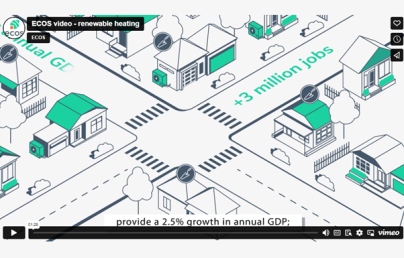Pär Johansson: “The optimal cooling solution is very much up to the system setup and the local conditions”

Pär Johansson: “The optimal cooling solution is very much up to the system setup and the local conditions”
Pär Johansson is Associate Professor at the Division of Building Technology, research team Building Physics Modelling. Pär works with high performance thermal insulation (super insulation) materials, materials for thermal storage (heat and cold) and status assessment of buildings using artificial intelligence (AI). The aim of the research is to reduce the environmental impact of the existing building stock while minimising risks when new materials are used in combination with old building techniques.
In Chalmers Energy Area of Advance, Pär is leading a work package on thermal energy storage solutions in the profile area Energy in Urban Development. He also participates in CIB W040 and CIB W080.
BUILD UP (BUP): How can cooling be integrated in buildings and how can it be optimised?
Pär Johansson (PJ): Either small-scale decentralised thermal storage or large-scale centralised storage systems are possible. We have studied both options and found that the optimal solution is very much up to the system setup and the local conditions, such as available energy production and the local price scheme. In areas with district cooling available, centralised storage solutions are often beneficial over decentralised storage solutions. However, this is governed by the local price model for the district energy network. In areas where the cost of peak cooling power is high, decentralised storage becomes economically viable. The cost-benefit of these options, and many more parameters, was studied in the recent dissertation by Yichi Zhang.
BUP: What materials could be used for thermal storage? What are the latest developments in research?
PJ: The most used material is water in the tanks used for hot water storage. There are huge research efforts spent on different materials for latent thermal storage. The benefit of using latent thermal energy storage is the reduced volume and stable temperature from these materials during the phase transition. Ice storage is used for commercial purposes to store thermal energy at low temperatures. For higher temperatures, different phase change materials are being investigated. The most promising are different mixtures of eutectic solutions based on salts that can be optimised for different system temperatures.
“The benefit of using latent thermal energy storage is the reduced volume and stable temperature from these materials during the phase transition”
BUP: What are the benefits of thermal energy storage for cooling district networks?
PJ: There is often a mismatch between the production of thermal energy and the demand in the system. In these cases, the thermal energy storage evens out the variations that would be needed at the production plant to reduce the design size of the production plant and distribution network. This can be done on different time scales, from hours, days, up to yearly variations, depending on the size of the storage. With the present increased variable renewable energy sources in the system, this demand is foreseen to increase.
BUP: What are ‘phase change materials’? What are the opportunities and challenges for their spread in the market?
PJ: Phase change materials are materials that go from one state to another. Most often from liquid to solid. This phase transition requires energy to happen and emits energy when reversed. During the phase transition the temperature is stable at the melting temperature. The main challenge is to maintain high enough power from the process during the phase transition. This needs a relatively high temperature difference between the inlet and outlet of the storage. The contact area between the heat carrier medium and the material in the storage also needs to be large enough for the phase transition to occur. The efficiency of the whole system is further determined by the efficiency of the heat exchanger. There are also cases where the phases have been separated from each other in the storage. In that case there is a solid and liquid separation in the tank where only sensible heat is stored after some transition cycles. This can be overcome by adding gelling agents or active mixing in the tank to create an even distribution of the material in the storage.
“Phase change materials are materials that go from one state to another. This phase transition requires energy to happen and emits energy when reversed.”
BUP: What are the applications of phase change materials in buildings?
PJ: Previously there have been applications of phase change materials in wall boards and plaster boards. In these examples the material was encapsulated and integrated in the board to increase the thermal storage of the construction. It is difficult to achieve full phase transitions here since there is seldom a large enough temperature variation in the indoor air to activate the phase change. Another example is to have phase change materials inside the ventilation system, integrated in ducts, to reduce the need to pre-cool the supply air. Here the temperature variations would be larger and could possibly activate the material. However, the most promising application of phase change materials is in centralised or decentralised thermal energy storage integrated into the cooling system. The volume of the storage and the system temperature can then be designed for optimal operation under the specific conditions.


